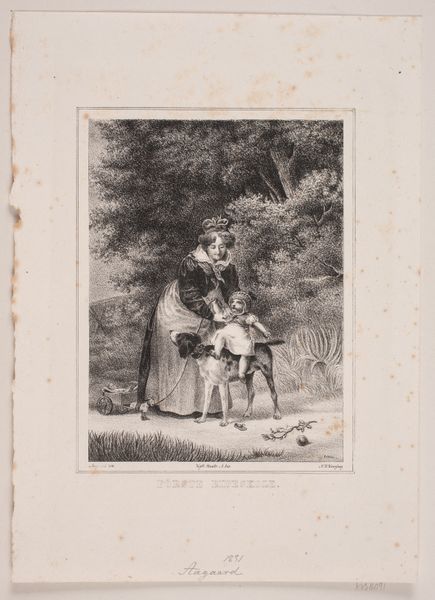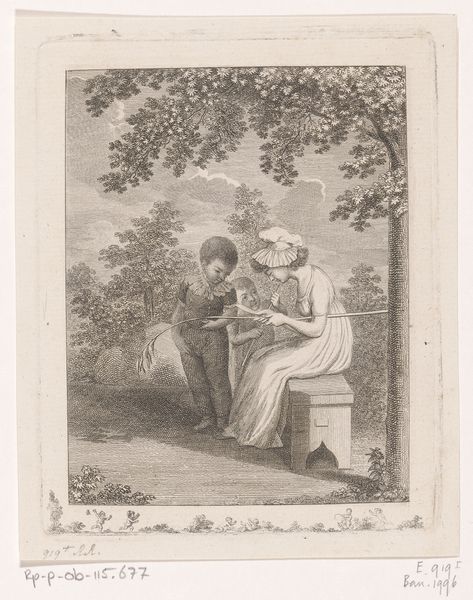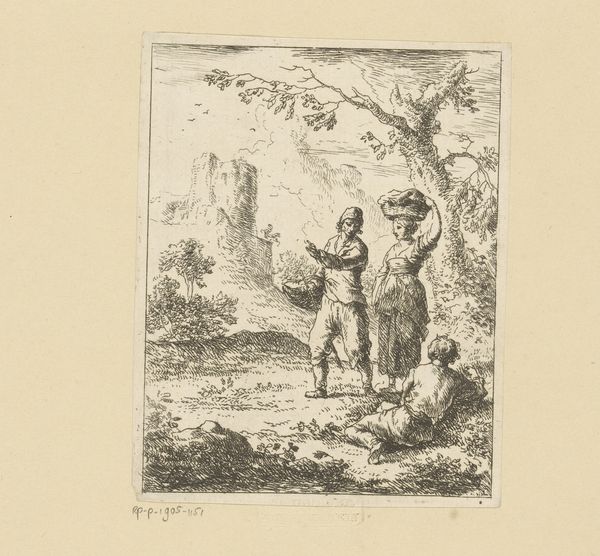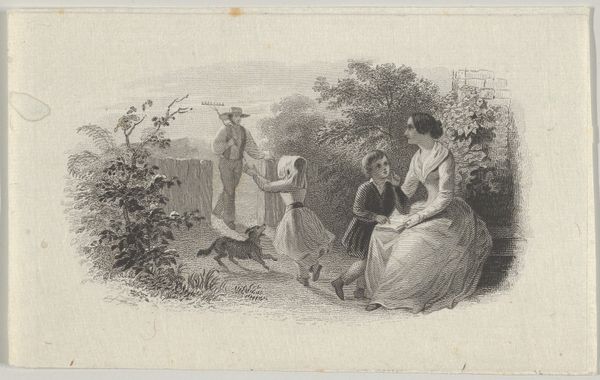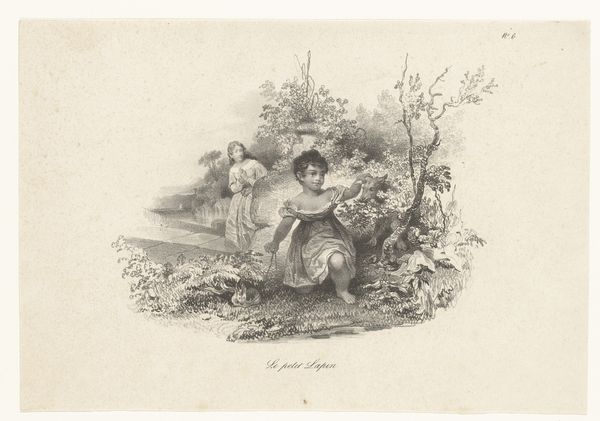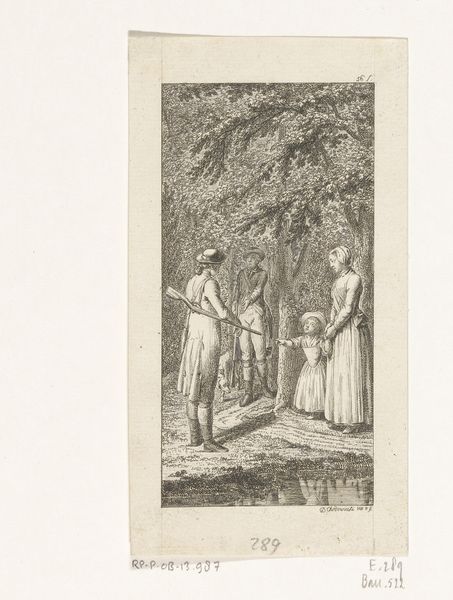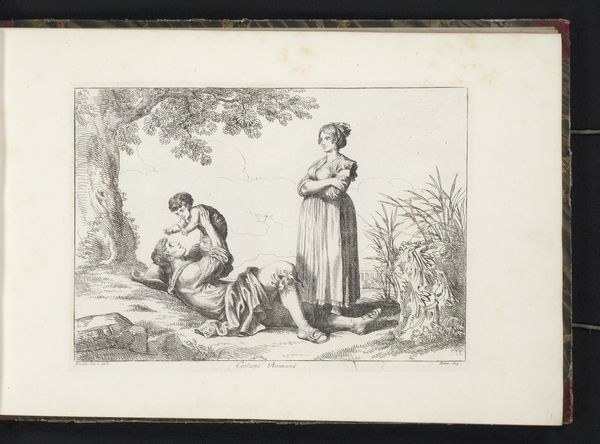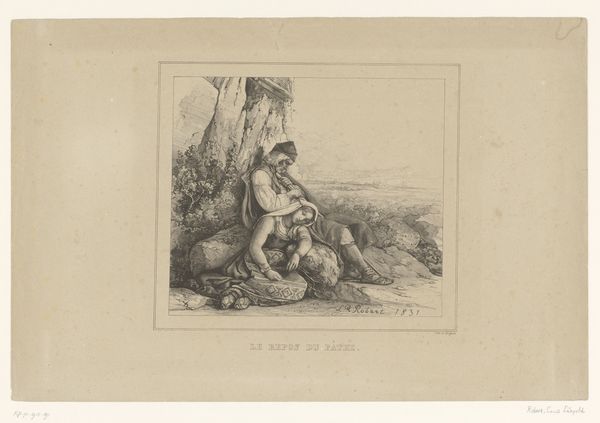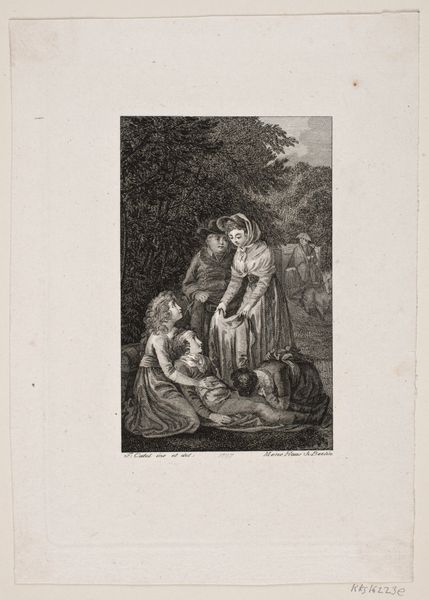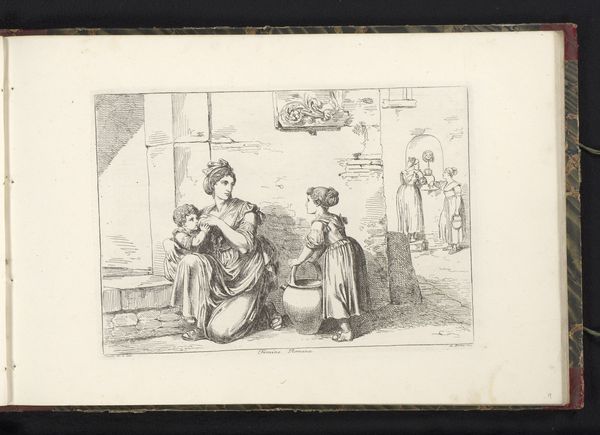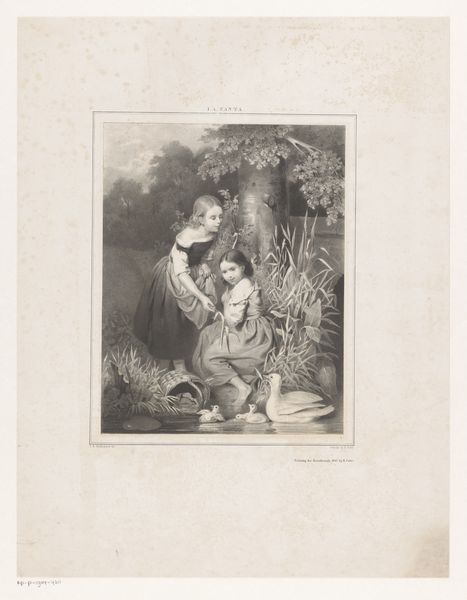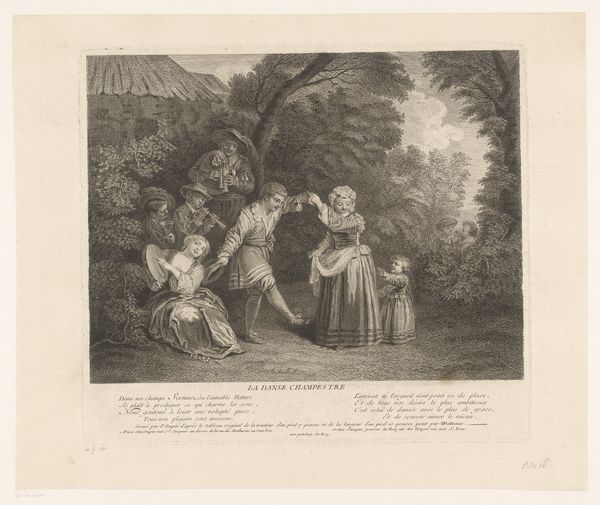
drawing, print, engraving
#
drawing
# print
#
landscape
#
figuration
#
romanticism
#
genre-painting
#
history-painting
#
engraving
Dimensions: height 205 mm, width 265 mm
Copyright: Rijks Museum: Open Domain
Curator: This is "Women and Children in Landscape," an engraving created by Friedrich Rehberg in 1793. It's a small work, almost intimate, given its subject matter. The figures, composed in a rural setting, invite a consideration of family and societal structures in late 18th-century Europe. Editor: It strikes me as quite melancholic. There’s a quiet intensity in the mother's embrace and a certain stillness in the other woman's stance. You can feel the weight of unspoken stories just by looking at it. Curator: Absolutely. Rehberg, while working within the conventions of history painting, infused a sense of genre-painting by illustrating contemporary life through classicism. The work underscores the socio-political expectations placed on women in that era, their roles firmly within the domestic sphere. Editor: And what are the power dynamics at play here? You’ve got a woman seated, cradling a child under a tree. Is that symbolic? Then you have what appears to be an adult woman standing accompanied by another child. What story is being represented, and how does class intersect here? It does suggest some economic disparities that are worth noting. Curator: Good questions. While not explicitly documented, class distinctions would absolutely inform such a depiction. The seated mother figure possibly suggests some dependency, while the others seem to look on, possibly as witnesses. The engraving is a narrative about familial structures and female social standing. Note the idealized landscape, the calming effect. Editor: Idealized maybe, but I think this idealization carries a critique with it. Romanticizing motherhood, the engraving inadvertently casts light on women’s restricted lives, limited opportunities and societal constraints of the time. Curator: Yes, the engraving, despite its seemingly serene subject, indirectly addresses limitations placed on women within the social landscape. Through visual examination, one may note that the print’s composition alludes to issues like property rights, class distinctions, and the female position within society. Editor: It's this tension between aesthetics and underlying critique that I find the most compelling here. It’s not merely a pleasant depiction of a family but a coded message that reflects complex socio-economic realities. Curator: A potent reminder, then, that art frequently acts as both mirror and critical lens, reflecting as it subtly critiques societal constructs of its period. Editor: I agree. It has really shed some new light and helped think about representation, not just as reflecting existing values but reinforcing them too.
Comments
No comments
Be the first to comment and join the conversation on the ultimate creative platform.
